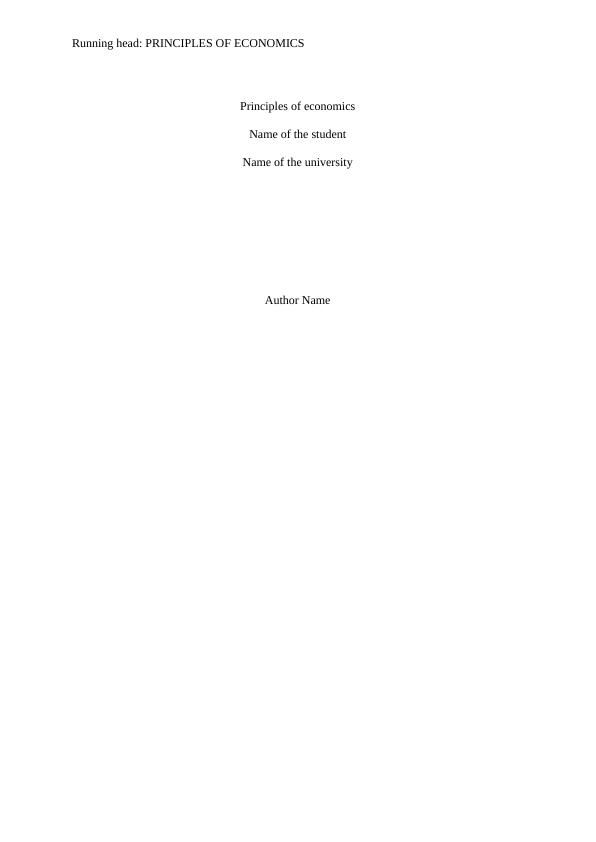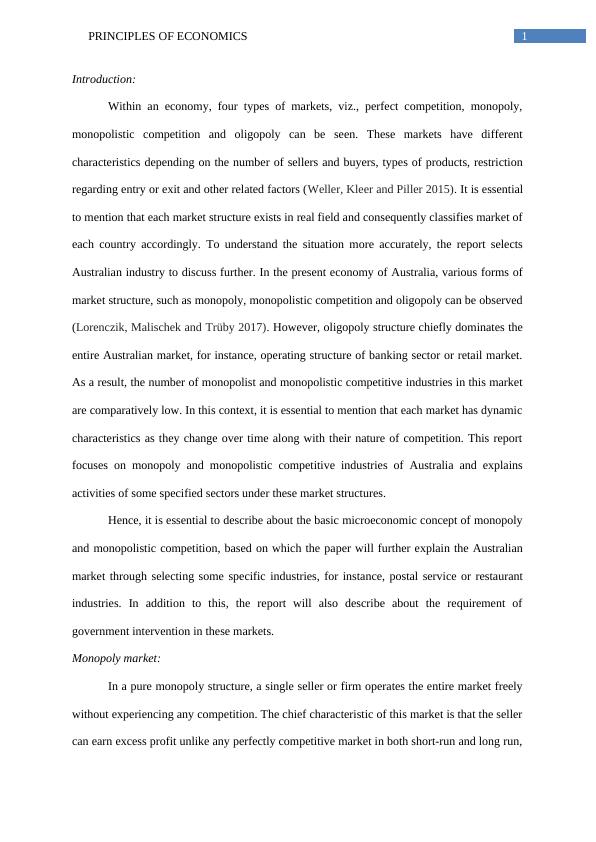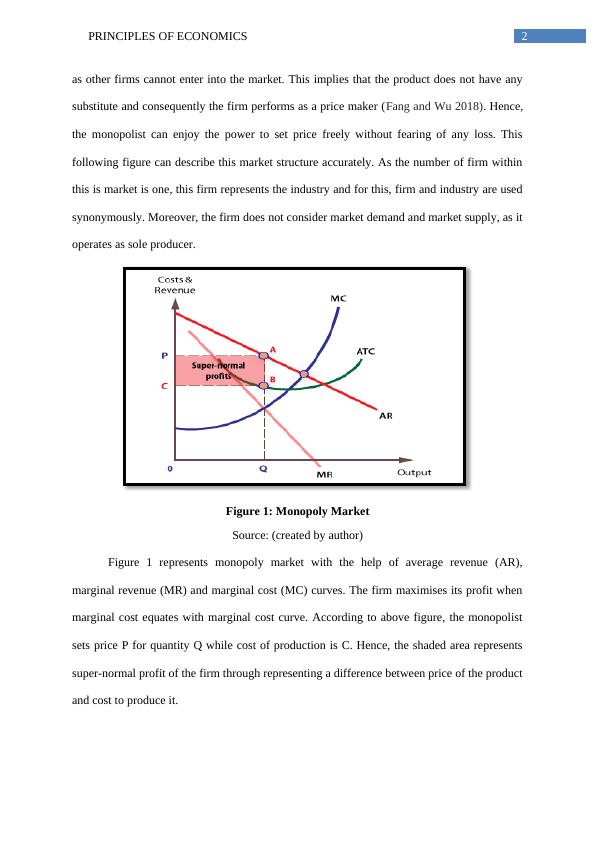Monopoly and Monopolistic Competition in Australian Market
11 Pages3186 Words150 Views
Added on 2023-06-07
About This Document
This report discusses the monopoly and monopolistic competition in the Australian market. It explains the characteristics of both markets and provides examples of monopolistic competition in the restaurant and coffee industries. The report also discusses the Sydney International Airport and the Australian Postal Service as examples of monopoly markets. It highlights the importance of government intervention in monopoly markets to protect consumer interests and control the monopolist's power. The report concludes that monopolistically competitive markets do not require government intervention as competition among firms can be observed.
Monopoly and Monopolistic Competition in Australian Market
Added on 2023-06-07
ShareRelated Documents
End of preview
Want to access all the pages? Upload your documents or become a member.
Monopoly and Monopolistic Competitive Markets in Australia
|11
|2856
|104
Monopoly Market Structure: Characteristics and Case Study of Australian Post
|10
|2178
|251
Economic Assignment
|23
|3778
|35
Monopoly Market: Characteristics, Case Study, and Government Intervention
|13
|2298
|182
Principles of Microeconomics Assignment
|13
|2832
|54
Economics for Managers: Perfect Competition, Monopoly, Oligopoly, and Australian Supermarket Industry
|16
|4513
|222




